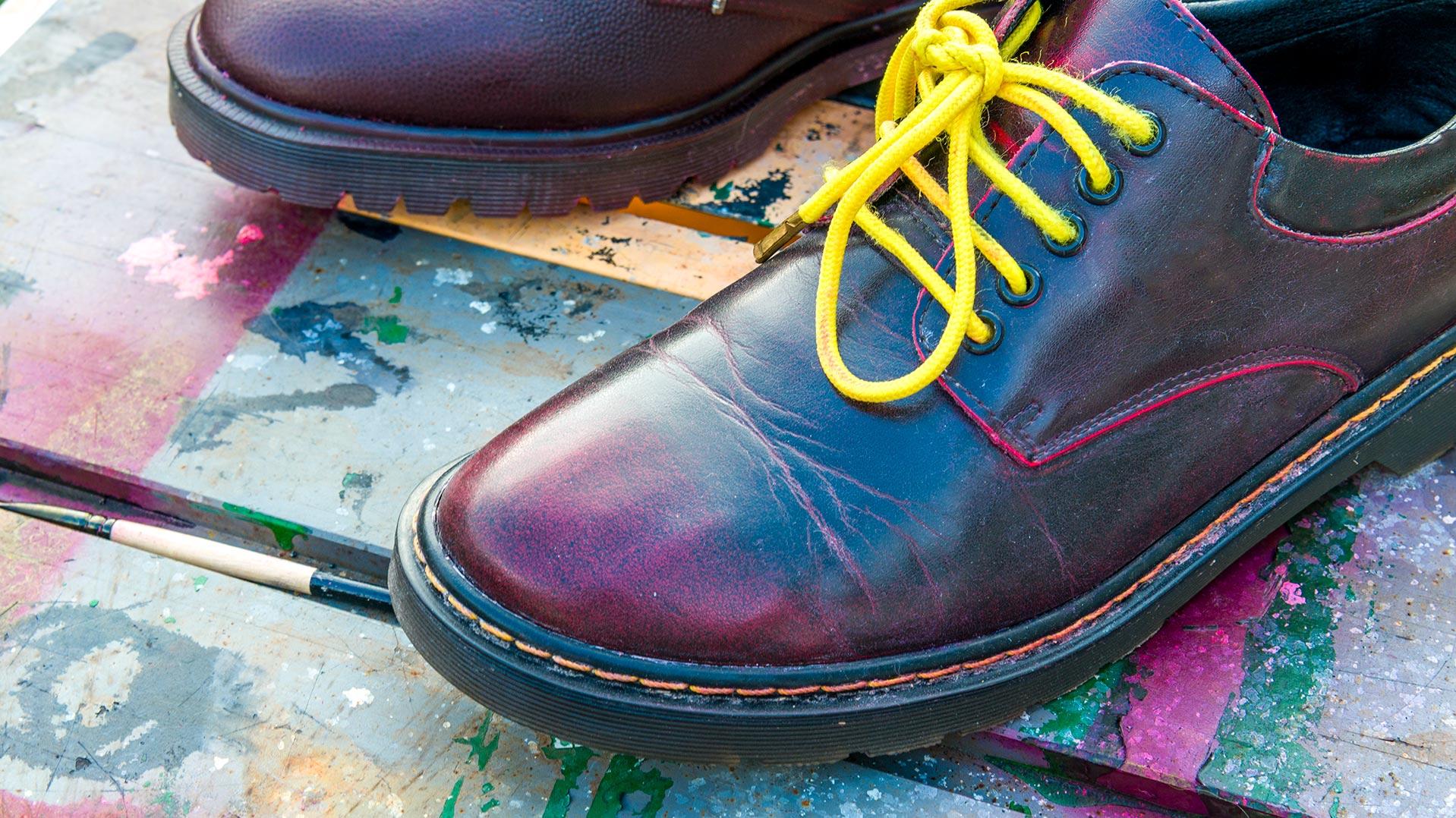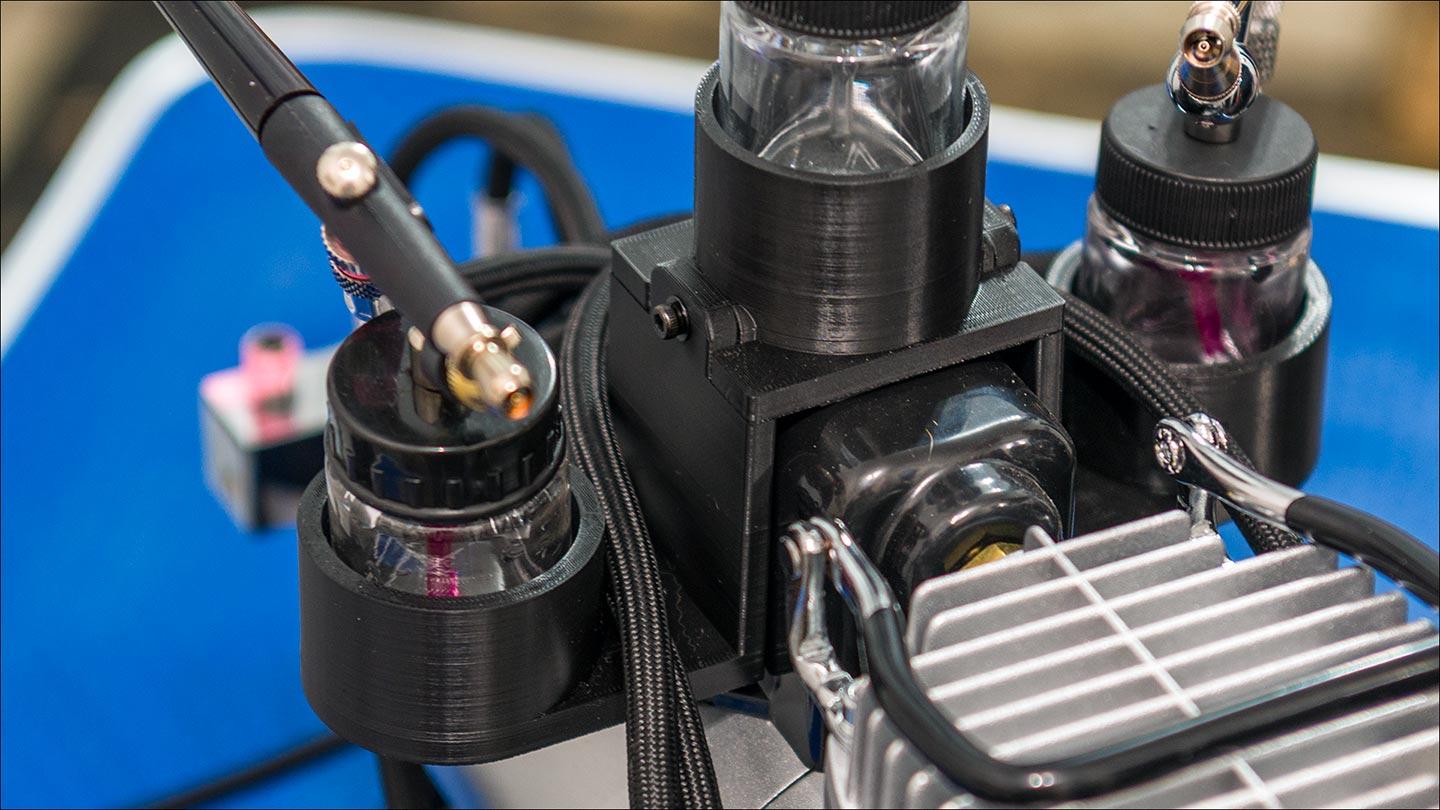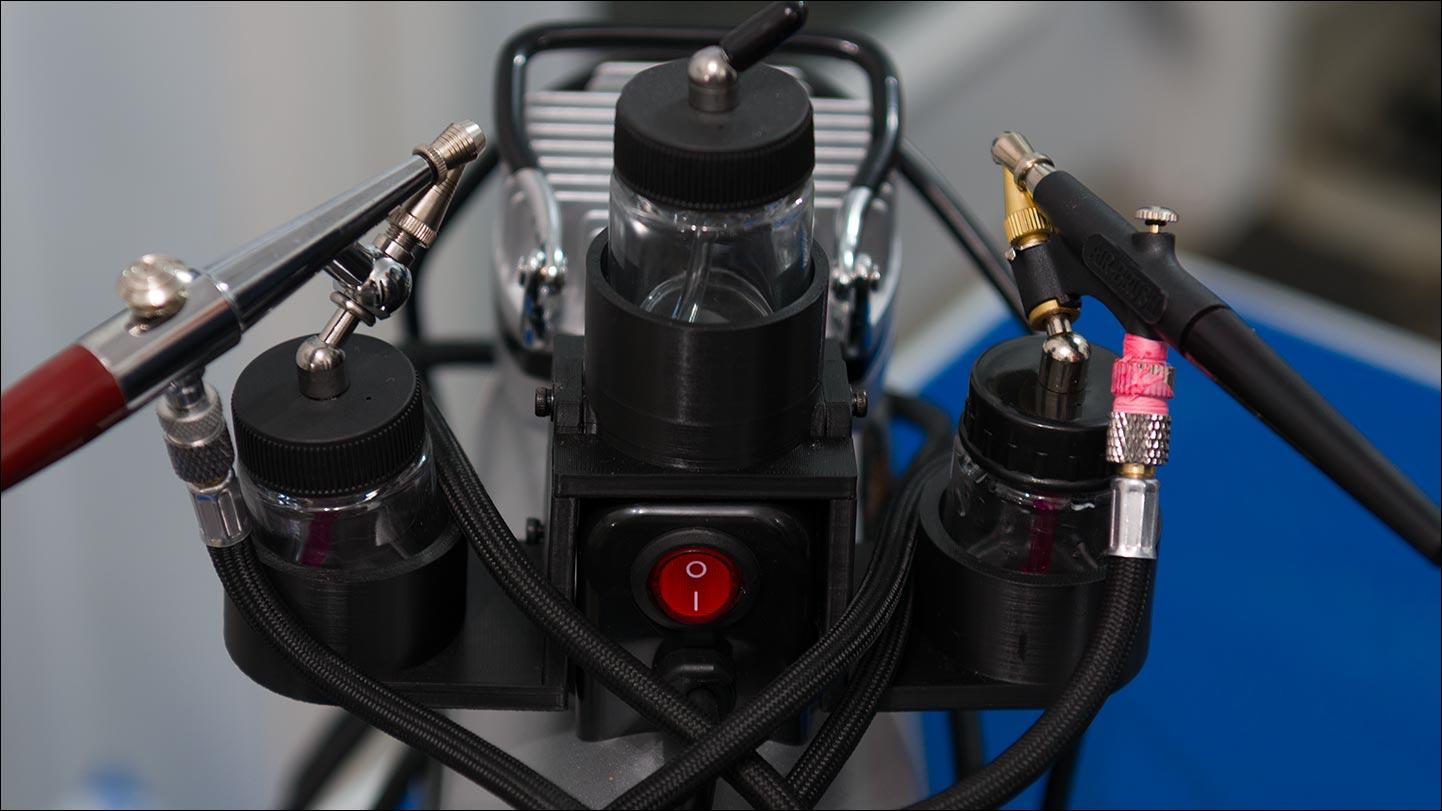
kgg
Contributing Member-
Posts
3,308 -
Joined
-
Last visited
Content Type
Profiles
Forums
Events
Blogs
Gallery
Everything posted by kgg
-
Looks good. If you can find a Singer patcher treadle stand I bet it would fit perfectly. kgg
-
Nicely done. I do like the rod drive verses the square tube drive. I am going to assume you made the base larger on the new one as you had the metal hanging around. kgg
-
Presser for wheels are generally used on bottom feed machines like post bed machines. An example would be the Techsew 810. They will not work on a walking foot or a compound feed machine, the Techsew 5100. kgg
-
I decided to replace my current veg tan fold-over wallet. Not because it failed but didn't like how the copper rivets held up over the last 4 years. This was done over the last few days and will be my daily wallet which lives in my front pants pocket. I keep my wallet pretty basic, drivers licence, credit card, health card, dental card and cash. How I done it: i) Leather used was 4/5 oz natural veg tan. ii) The raw veg tan leather was airbrushed with 100% pure organic JOJOBA oil with no dilution at 34 psi on the exterior first and sat for 24 hours. iii) The oiled veg tan leather was airbrushed with OX Blood at a 50/50 dilution of dye at 34psi iv) The wallet pattern was cut, the cutout for the credit card was cutout and the fold over glued using LePages Heavy Duty Contact Cement. Let it sit for 24 hours under clamp compression. v) The wallet was cut to final dimensions, Chicago screws and corners were punched. vii) The interior was airbrushed with JoJoba oil let to sit for about an hour. viii) The interior was airbrushed with OX Blood at a 50/50 dilution of dye and sat for 24 hous. ix) The stitching in the credit card section was done with V138 bonded nylon using a Juki LS-341 clone with a 3D printed table top attachment x) The Chicago screws were installed in the credit card and the money clip. xi) The raw edges dyed I got to touch up a couple parts on the corners and add another coat of oil to exterior.
-
In a nut shell don't walk away, run away from the portable walking foot machines. This is a poor cousin clone of the Sailrite LS. There has been a lot of discussion and their pitfalls on this style of walking foot machines. IMHO the three biggest cons are: i) it will sew approximately 1/8" thick material, ii) as the thickness of what is being sewn the stitch length will decrease iii) max thread size is V92 and the list go's on and on. kgg
-
As a note the higher the number at the end means the more recent the machine was made with the Consew 206rb-5 being the most recent. Base on my own experience of owning a couple of Consews with the last one being a Consew 206RB-5 I can not recommend them. From your list it appears you have decided on a flatbed so the next thing is decide on a budget otherwise you are going to drive yourself nuts. Is this machine going to be your main machine and your first machine? kgg
-
You didn't mention if it was a motorized strap cutter or a mechanical one that you are looking for. ????? kgg
-
I think your are right the lady should have sent the client to a someone that does that kind of work. The leather patches seem to be a stop gap measure. The straps to me hold the saddle and rider to the horse be it I know nothing about saddles the repair seems iffy at best. I think the straps should have been completely replaced as the new leather straps were scabbed onto the old leather that looked like they were gone way beyond their best before date. kgg
-
I have a Juki DNU-1541S and it is a very nice brand name compound feed (needle / feed dog / presser foot) machine. I also bought a Juki DU-1181N walking foot (feed dog / presser foot). The reason for the Juki DU-1181N is my Juki DNU-1541S absolutely hates thin stuff and can drive softer material down into the feed dog hole and create problems. I have never sewn or seen German square weave carpet except on Youtube but if had to I would probably consider binding the carpet with the Juki DU-1181N rather then the Juki DNU-1541S. Since you have other projects like head liners / leather I would purchase the Juki DNU-1541S and do any necessary work around's for the thin stuff. Another alternative to consider is a cylinder bed machine like Juki LS-1341 or clone with a table top attachment. If this is your first machine I would suggest taking a sample of your stuff to a dealer and see what would work best for your needs. kgg
-
Totally Agree. The next project is going to be a small spray enclosure with exhaust for the house. Glad it helped kgg
-
It appears the price went up from the $9.99 CAD when I ordered it to $10.69 https://www.amazon.ca/Airbrush-Splitter-Disconnect-Regulation-Compressor/dp/B09XDYFG93/ref=sr_1_1?crid=3Q6F555AR3IIX&dib=eyJ2IjoiMSJ9.wE4XqJHbKH9dn79iiZk-EH1t-_Jmt1oZ7neTJr9ZKPxohuZnpVvwpU1yIvUXgiwOzoTAebFLHjntt9ZW0wvYsVeALoPaLkJPHr2218LLQuSBgPGUvBEporcPt_4adYb7yizB6HVkyOu5hy1C7qAQZIAyuzV8xGNNiZUlYiL_lE_tzm58kUgZYrBseG8m_Oy8BtJrtV5_dM_4h7ZvHL_g_V9xVBNCaGzdkGUX-Pz5328KvUKLdM22rGWoJyq4BTIypNIs3C3KPV4BOEbcOmVCsqA89TlC0sSNQ5n5DptkaqY.UTa_EHjXPEQqqPzvA02-2XfKfSD_5cp3R5p6ffLqCmA&dib_tag=se&keywords=Tiiyee+Metal+Air+Hose+Splitter%2C+3-Way+Cross+Lever%2C+Quick-Connect%2C+Silver%2C+6.3+mm+%2F+0.25+inch%2C+Airbrush+Adapter&qid=1758242082&sprefix=tiiyee+metal+air+hose+splitter%2C+3-way+cross+lever%2C+quick-connect%2C+silver%2C+6+3+mm+%2F+0+25+inch%2C+airbrush+adapter+%2Caps%2C206&sr=8-1 kgg
-
The brake in a clutch motor is to stop the sewing machine when the "go" pedal is released even through the motor continues to run. In a servo motor the motor stops rotating when the "go" pedal is released so a brake in reality isn't necessary when sewing at slow speeds. At high speed sewing it would be possible to get some run on. kgg
-
Thank you. You know me, no machine is complete until it has been 3Ded. I do use quick connectors on my other compressors but had difficulty finding them or this setup. Thank you. No method is the best it just depends on what will work best for the project. kgg
-
This how I do it in a nut shell: i) Apply Jojoba oil. The oil is undiluted and applied with +30 psi to the veg tan. Wait 24 hours. My theory is that with +30 psi the Jojoba oil is forced in the leather and causes the leather fibres expand to allow for better dye absorption. The reason I don't use Neatsfoot oil is there is a possibility of it going rancid and degrading stitching over a period of time????? ii) Apply the dye. The dye mixed with 99 percent rubbing alcohol at a 50/50 ratio and applied at +30 psi. Wait 24 hours. On the shoes (done August 2023) I used a Paasche airbrush with a psi setting of +45 psi. iii) Apply Jojoba oil to the veg tan. Wait 24 hours then finish. Here is a couple of photo's of one shoe from each pair of shoes (done August 2023) after two years of wear. Like @Dwight mentioned you can do some nice fading which can be seen being a lighter tone on toe and darkening to the body of the shoe. kgg
-
In multi layers or thick leather move up one size from the needle size recommended. EX for V138 I normally use a #23 but in thick I would go #24. kgg
-
Thank you. I have a tendency to agree if the dye isn't applied with the proper air pressure to drive the dye into the leather. From what I have seen on youtube people are using pressure settings in the sub 20 lb pressure range and the dye is basically a top coating. Probably because most people are painting model figures/cars/nails/cakes/etc. I use a 30 lb pressure setting when applying the dye with multi coats in different directions to get a more even dying which I apply after the oiling process. My basic process is oil/dye/oil. Thank you. The shaker part is probably not necessary, just an added feature. Many, many years ago the father while trying to teach me some basic bodyman techniques always said to shake the paint when I refilled or changed to a new cup on the gun. I guess it just stuck. kgg
-
Some AI notes on Jojoba oil and Neatsfoot oil. Jojoba oil is chemically nearly identical to the sperm whale. Jojoba oil is a liquid wax ester that closely resembles human sebum. It penetrates leather fibers well, moisturizes deeply, and is less likely to darken leather or cause discoloration. It is also stable, won't go rancid, and is hypoallergenic. It is often recommended for delicate leather items and is favored for leaving a natural feel without heavy saturation. However, it is more expensive and can be harder to apply evenly without over-saturating the leather. Neatsfoot oil is derived from cattle bones and is a traditional, widely used conditioner for rugged and outdoor leather items like boots and saddles. It penetrates deeply and restores suppleness and flexibility to leather. However, it can darken leather significantly and may turn rancid if over-applied, which can negatively affect the leather and its stitching over time. It is suitable for thicker, durable leathers but needs cautious use. Neatsfoot oil is still commonly used for leather boots, saddles, and outdoor gear. It deeply conditions but may soften or darken lighter leathers over time and must be used in moderation to prevent damage to stitching. kgg
-
The following is long and my experience for dying, oiling leather. My journey to airbrushing and the cost of a small setup not including a spray booth. How I got here: i) Tried the dabber method I could not get consistent results from one piece to another and used to much dye. ii) Tried the dipping method got consistent results just never liked what it done to veg tan leather or the end result. iii) Tried the brushing method getting consistent results were difficult. iv) Tried the continuous spray bottle that women use for misting hair but typically gave a spotty coverage. The spray bottle was large, clumsy and awkward to use. v) Tried the small cordless airbrush which was a dual action airbrush. It did work but was under powered pressure wise, clumsy and awkward to use due to it's battery pack size. I have used a single action Pasache airbrush in the past with a real compressor and it worked perfectly. The pro to a real air compressor is all the reserve air capacity while the drawback particularly indoors is the noise of the compressor motor. To that end I purchased off Amazon.ca two cheap single action airbrushes ($40 CAD), nylon braided 6' hose ($28 CAD), 10 pack of 60 degree down angle glass bottles ($30 CAD), three way outlet splitter ($10 CAD) and a small airbrush compressor with a 3 litre reserve air tank ($106 CAD ) for a total of $214 CAD. The reason for: i) Airbrushes: The simplicity of the single action airbrush vs the dual action airbrush. Insert the bottle of mixed dye and thinner (50/50) to the airbrush, push the down on the "go" button, set the nozzle spray and you are good to go. As a note I use 100% pure organic JOJOBA oil and the airbrushes will apply it without dilution. I like JOJOBA oil as it is almost identical to sperm whale oil. ii) Hose: The air hoses that came with the Amazon airbrushes, to be kind, were absolutely terrible. They are made of plastic tubing with poor end fittings that leaked. iii) Compressor: The airbrush compressor is almost silent, had a cooling fan, water separator and a 3 litre air reserve tank. iv) Bottles: Pro's: Glass bottles are easier to clean, don't stain like the plastic ones and you can see at a glance how much dye / oil you have left. Also I can mix different dyes, oil and thinner without the worry of any cross contamination. Con's: Getting 60° angle down angle adaptor lids with rubber seals, spout covers and 22 cc (3/4 oz) glass bottles for single action airbrushes can be either difficult or expensive ($6 - $10 CAD each). v) Outlet Splitter: Simply convenience. The three way splitter with three separate shutoff valves makes it so easy to change between airbrushes. Personalization: The setup was still lacking for my needs. It needed: i) an airbrush storage holder and I'm to cheap to buy one that fitted over the Pressure Regulator at $30 CAD ii) a dye shaker to prevent any die/thinner separation. So me being me I designed a very simple one and 3D printed it. The holder mounts on top of the ON/OFF electrical box, install 3mm high density rubber in the bottom of the holders and was dirt cheap to make. When the compressor motor kicks in the airbrushes and or bottles vibrate slightly. Conclusion: What I have found is that airbrushing for dying and oiling uses considerably less fluid then any of the other methods that I have tried and gives more consistent, repeatable results. As a note I use JOJOBA All comments are appreciated. What are your thoughts??? kgg
-
You really looking at compound feed machines (needle/feed dog/presser foot) move the material along which the machines you have mentioned are. For flat items, think of wallets/belts, are best done on a flatbed machine like a brand name Juki DNU-1541S or a clone which the Consew RB is and both are able to handle up to 3/8" thick material. For round items like bags, seats a cylinder arm machine is a much better choice like a brand name Juki LS-1341 or a clone and able to handle up to 7/16" thick material. . You can sorta kinda turn a cylinder arm into a flatbed machine by installing a table top attachment but you can not turn a flatbed into a cylinder arm machine. The cost of brand name machines like Juki can be expensive that is why a lot of people go with clone machines like Consew, Cowboy, Cobra to name a few. There are quite a few clones available at various price points, just depends on how deep your pockets are.
-
Your needle is probably to small for the T135 (V138) thread in thick/grabby leather. You should try using a #24 needle. Here is a link to a good thread size vs needle size chart: ( https://www.tolindsewmach.com/thread-chart.html ). kgg
-
First off it really depends on what you want to sew. Which is ??? Keep in mind i) the machine could date back to the mid 1930's and with all PFAFF machines parts can be expensive if available. ii) Chances are it has a clutch motor which really needs to be replace with a servo motor and that will cost about an additional $200 USD. Personally I would not consider paying a $1000 USD plus $200 for a motor for a machine that old. If you tell us what items you want to sew there are better options available. kgg
-
Have you complained to the seller / vendor as they may not be aware of the rancid problem??? kgg
-
I watched your video and here is my two cents worth. i) When you started you did not hold the thread properly to prevent thread movement (Top and Bobbin) like you did at the 5:54 mark. ii) At the 3.10 mark you can see the top thread (black thread) gets pulled in slightly which is causing a slack in the top thread and causing a jam at the 3:20 mark. iii) You did not back stitch after three stitches to lock the thread before starting your seam. iv) When you finish the seam you are not back stitching to lock the thread. v) With a thin piece of material like what you are using in the video there is almost not space to bury the bobbin thread knot in the material particularly with thicker thread and vinyl is a sticky material as far as the thread is concerned and will want to catch on the sides of the hole the needle makes. Keep in mind for every hole of each stitch you have the thickness of three threads (top thread and the two halves of the bobbin loop). vi) When finishing the seam and after back stitching try hand wheeling the needle up to the point where the tension disc release before removing the material. What size of needle are you using???? What size of thread??? kgg












